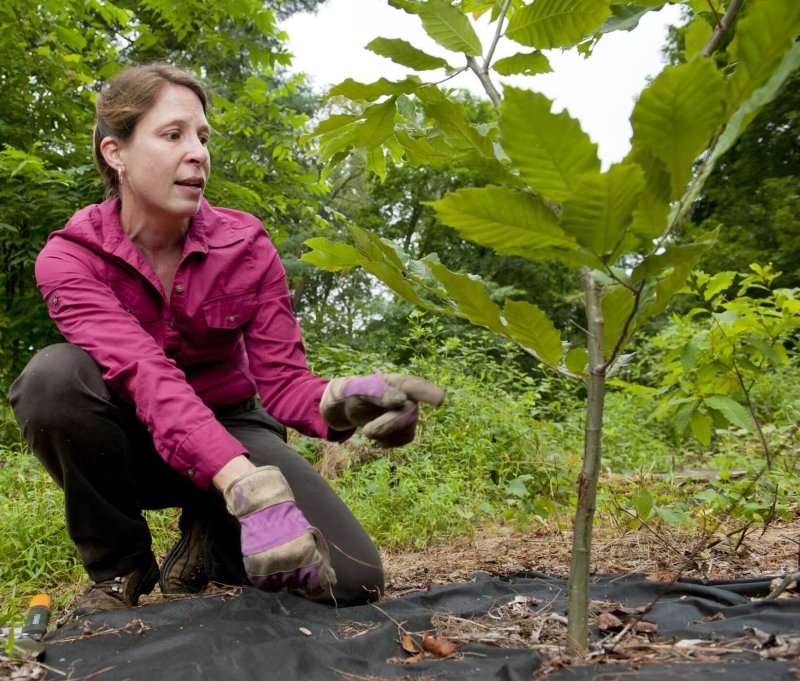Scores of tiny American chestnut seedlings that grow in a field in the upstate New York countryside could be the vanguard in the resurgence of what was once the most dominant tree in the eastern forests.
The young trees carry one gene, added by scientists to the 38,000 genes that occur naturally in American chestnuts, that makes them capable of withstanding the invasive blight that wiped out billions of their ancestors a century ago.
Said William Powell, a professor at the College of Environmental Science and Forestry (ESF) in Syracuse, New York: “They’ll be the basis for the trees we will use for demonstration and research for the next 100 years.”
Powell and his team are poised to seek regulatory approval from the federal government to distribute the trees publicly. That will involve review by the U.S. Environmental Protection Agency, the U.S. Department of Agriculture, and the Food and Drug Administration. Although regulatory approval has been sought, and obtained, for many agricultural crops, this is the first time such approval will be considered for a threatened plant that is intended to be reintroduced into its natural environment. Powell expects the process to take two to four years.
“We’re paving the way for all the other trees that are affected by invasive species: ash, elm, hemlock and walnut among them,” he said. “We are the first to ask for approval for a genetically engineered wild tree, the first to go through the regulatory process.”
The GLP aggregated and excerpted this blog/article to reflect the diversity of news, opinion, and analysis. Read full, original post: Mighty American Chestnut Poised for Return to America’s Forests































